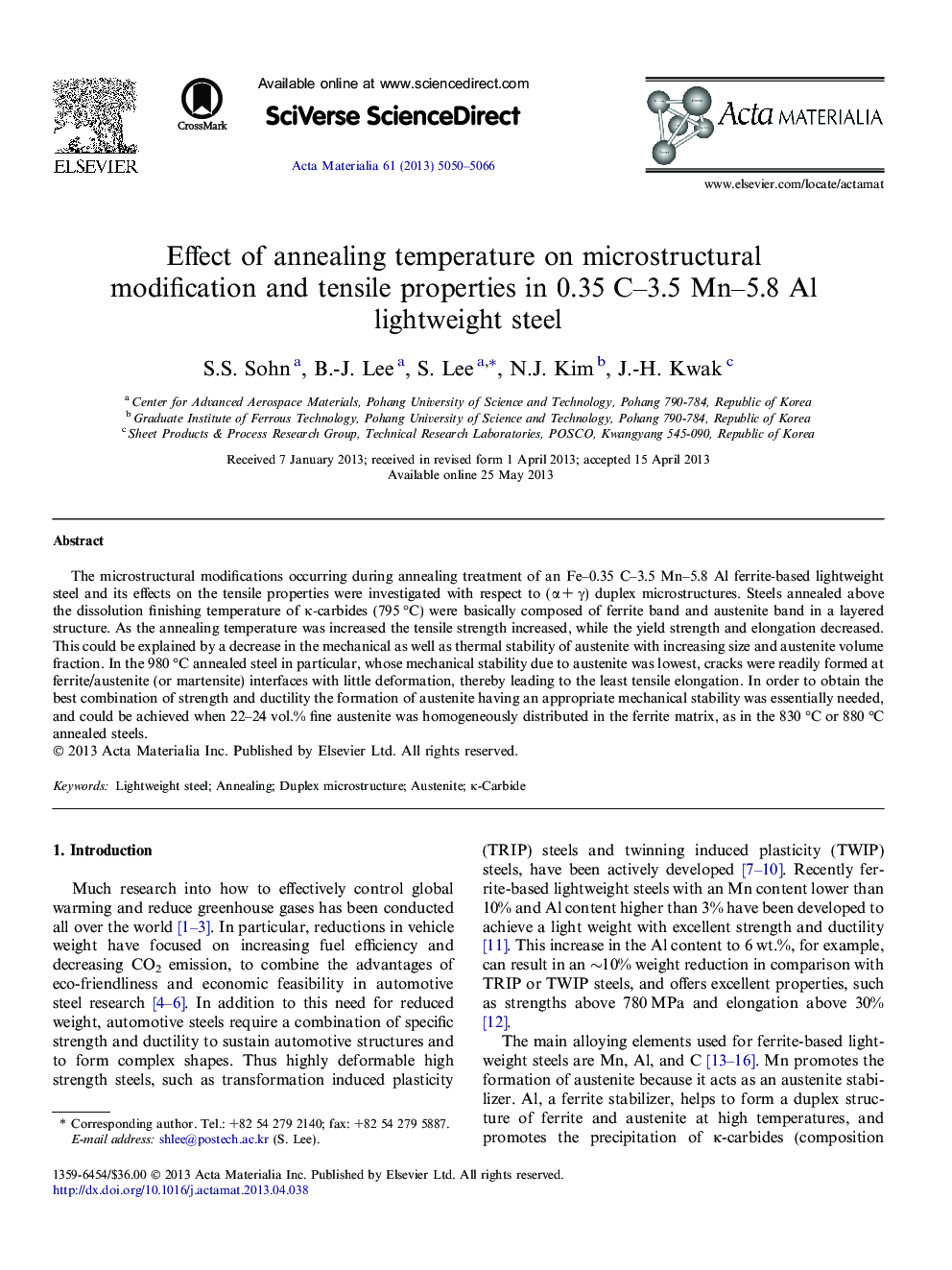| Article ID | Journal | Published Year | Pages | File Type |
|---|---|---|---|---|
| 1446279 | Acta Materialia | 2013 | 17 Pages |
The microstructural modifications occurring during annealing treatment of an Fe–0.35 C–3.5 Mn–5.8 Al ferrite-based lightweight steel and its effects on the tensile properties were investigated with respect to (α + γ) duplex microstructures. Steels annealed above the dissolution finishing temperature of κ-carbides (795 °C) were basically composed of ferrite band and austenite band in a layered structure. As the annealing temperature was increased the tensile strength increased, while the yield strength and elongation decreased. This could be explained by a decrease in the mechanical as well as thermal stability of austenite with increasing size and austenite volume fraction. In the 980 °C annealed steel in particular, whose mechanical stability due to austenite was lowest, cracks were readily formed at ferrite/austenite (or martensite) interfaces with little deformation, thereby leading to the least tensile elongation. In order to obtain the best combination of strength and ductility the formation of austenite having an appropriate mechanical stability was essentially needed, and could be achieved when 22–24 vol.% fine austenite was homogeneously distributed in the ferrite matrix, as in the 830 °C or 880 °C annealed steels.
